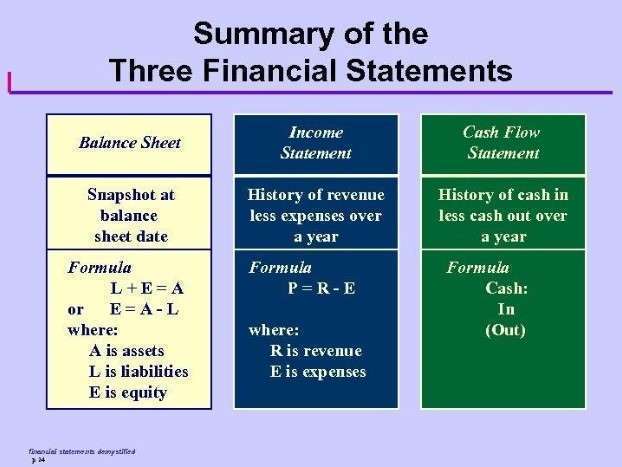
Part of the benefits investors receive for purchasing shares in a company is the payment of dividends that they receive either quarterly or yearly depending on how often the company declares distributions. Whenever a company declares distributions, the amount used to pay the shareholder dividends is deducted from the retained earnings account. Hence, retained earnings are the portion of a does retained earnings have a credit balance company’s net income that is set aside by the company for various operational purposes after dividend payments to its shareholders.
Formats of the Balance Sheet and Accounting Equation
Retained earnings could be used to fund an expansion or pay dividends at a later date. Retained earnings are related to net (as opposed to gross) income because they reflect the net income the company has saved over time. On the other hand, when a company generates surplus income, a portion of the long-term shareholders may expect some regular income in the form of dividends as a reward for putting their money into the company. Traders who look for short-term gains may also prefer dividend payments that offer instant gains.
The Journal Entry for Retained Earnings and Dividends
First, revenue refers to the total amount of money generated by a company. It is a key indicator of a company’s ability to generate sales and it’s reported before deducting any expenses. Retained earnings are reported in the shareholders’ equity section of a balance sheet. We’ll explain everything you need to know about retained earnings, including how to create retained earnings statements quickly and easily with accounting software. Retained Earnings are credited with the Net Profit earned during the current period. Net income increases the balance in the Retained Earnings account, so we would credit the Retained Earnings account by $20,000.

Debit and Credit Accounts and Their Balances
When the retained earnings balance of a company is negative, it indicates that the company has generated losses instead of profits over the period of its existence. Most companies that have a negative retained earnings balance are usually startups. This is because, at the beginning of the life of a business, it is most likely to incur losses due to the fact that its products and services have not yet gained market recognition. Thus, they do not have sufficient patronage to ensure their profitability yet.
Example 2: Closing Expense Accounts
- Conversely, when a company has net income, the earnings account is credited.
- Retained earnings are reported on the retained earning normal balance sheet as a part of shareholders’ equity.
- Try Wafeq, the advanced electronic accounting and invoicing system, and join the thousands of business owners who use our integrated system.
- In order for us to effectively answer the question of retained earnings being debit or credit, we first have to understand what retained earnings are and further take a look at the meaning of debit and credit.
- The closing entries are dated in the journal as of the last day of the accounting period.
- If a company’s retained earnings are less than zero, it is referred to as an accumulated deficit.
Or a board of directors may decide to use assets resulting from net income for plant expansion rather than for cash dividends. For example, a loan contract may state that part of a corporation’s $100,000 of retained earnings is not available for cash dividends until the loan is paid. Journal entries for retained earnings are made when the company transfers its net income to the income summary account and when dividends are paid out. The Accounting for Technology Companies income summary is a temporary account that is used to close the income and expenses of a company for each accounting period. If the net income is a profit, it is a credit to the retained earnings. It is permanent because it is not closed at the end of each accounting period.

By debiting retained earnings, the corporation recognizes that it has less money available for future operations, investments, or dividend payments. The debiting of retained earnings is a standard accounting practice that helps corporations keep track of thir financial performance over time. The retained earnings account is closed at the end of each accounting period, with any remaining balance carried forward to the next period.
Rules Of Debits And Credits For The Balance Sheet
For a more detailed retained earnings explanation, it’s essential to understand that retained earnings grow over time as the company generates profit. When a company earns net income, it can choose to distribute some of that income as dividends to shareholders. The remaining amount, after dividends are paid, is added to the retained earnings account. A balance sheet with retained earnings shows the financial position of a company at a specific point in time.
Closing Entry For Net Income
Appropriated retained earnings are those set aside for specific purposes, such as funding capital expenditures or paying off debt. According to the provisions in the loan agreement, retained earnings available for dividends are limited to $20,000. According to the provisions in the loan agreement, retained earnings available for dividends what are retained earnings are limited to $20,000.
- These appropriations are often disclosed in the notes to the financial statements.
- Likewise, after transferring all revenues and expenses to the income summary account, the company can make the journal entry to close net income to retained earnings.
- Retained Earnings are a part of “Shareholders Equity” presented on the “Liabilities side” of the balance sheet as it indicates the company’s liability to the owners or shareholders.
- However, if the mistake is related to the revenue and expense, it will be tricky to correct them.
- Now, let’s say ABC Corporation declares and pays dividends of $10,000 to its shareholders during the year.
Where Is Retained Earnings on a Balance Sheet?
They are a measure of a company’s financial health, and they can promote stability and growth. Generally speaking, a company with a negative retained earnings balance would signal weakness because it indicates that the company has experienced losses in one or more previous years. However, it is more difficult to interpret a company with high retained earnings. When the retained earnings balance is less than zero, it is referred to as an accumulated deficit. Both revenue and retained earnings are important in evaluating a company’s financial health, but they highlight different aspects of the financial picture.
